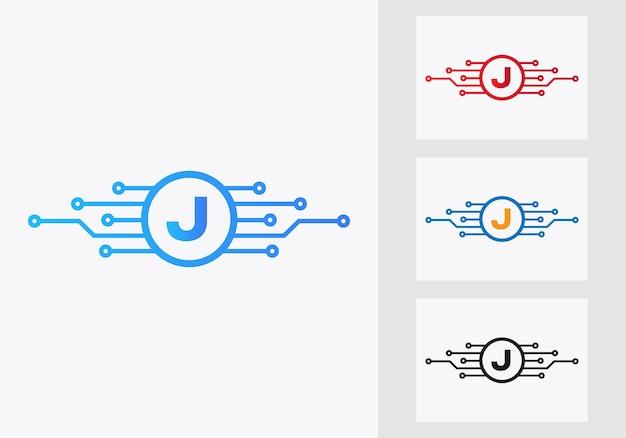Integration Hub ETL is a vital concept for ServiceNow users. It enables seamless integration and data transformation between different applications and systems. It’s a game-changer that amplifies the capabilities of the ServiceNow platform, making it a hub of all enterprise processes. But what is ETL integration, and how does it benefit your business?
In this blog post, we’ll explore the basics of ETL integration, the ServiceNow Integration Hub, and the Integration Commons for CMDB ServiceNow. We’ll also delve into the transformation maps and how they enable data transformation between different systems.
As we explore, we’ll discover the benefits of using ETL integration to eliminate data inconsistencies, reduce errors, and improve overall business efficiency. We’ll also explain the step-by-step process of installing the Integration Hub in ServiceNow.
ServiceNow Integration Hub is a valuable tool that is worth exploring, whether you’re a beginner or an experienced ServiceNow user. With our comprehensive guide, you’ll learn everything you need to know to take full advantage of the Integration Hub ETL. Let’s dive in!
Integration Hub ETL: Streamlining Your Data Integration Process
Are you tired of managing disjointed data sources and struggling to keep them all up to date? Look no further than Integration Hub ETL.
What is Integration Hub ETL
Integration Hub ETL, or Extract, Transform, Load, is a data integration solution that automates the process of extracting data from various sources, transforming it into a unified format, and then loading it into a designated system. It provides the ability to establish connections between different applications and systems in real-time, empowering businesses to break down data silos and subsequently obtain better insights.
How Does Integration Hub ETL Work
Integration Hub ETL works by connecting various source systems and applications, such as CRMs or ERPs, and extracting the relevant data from them. The data is then transformed into a unified format, avoiding any discrepancies, and loaded into any desired location or database.
Integration Hub ETL can process and integrate complex data types, including structured, semi-structured, and unstructured data. It also has the capability to handle data from various sources, including databases, flat files, APIs or web services, and legacy systems.
The Benefits of Integration Hub ETL
Integration Hub ETL provides businesses with a multitude of benefits, some of which include:
- Streamlined automation. Integration Hub ETL automates the data integration process, allowing businesses to create a more efficient and reliable workflow by reducing the risk of human error.
- Centralized Management. Integration Hub ETL provides a centralized location for managing all data sources, reducing the need for multiple teams and tools.
- Improved Efficiency. Integration Hub ETL enables businesses to access valuable and accurate insights in real-time, increasing efficiency and reducing the time it takes to process and analyze data.
Integration Hub ETL is an innovative solution for streamlining the data integration process, enabling businesses to access valuable insights in real-time and improve overall efficiency. By using Integration Hub ETL, businesses can eliminate data silos and gain the ability to manage all data sources in one centralized location, ultimately leading to a more efficient and effective data integration process.
What Is ETL Integration
If you’re into data, you most likely have heard at least a little bit about ETL integration. ETL stands for Extract, Transform, and Load, and it refers to a process used to collect data from various sources, transform it into the desired format, and store it in a target database or data warehouse.
Extraction
The first step in ETL integration is to extract data from various sources, such as files, APIs, databases, or web services. This process involves identifying the data sources and determining the best way to retrieve the data. Often, the data sources are in different formats or locations, so data engineers use specialized tools to extract data from these heterogeneous sources.
Transformation
After the data is extracted, it needs to be transformed into a format that is suitable for the target system. For example, you might need to remove duplicates, correct errors, or merge data to create a single view of the data. This process involves applying business rules to the data to make it consistent and reliable. Then, data engineers transform the data into a format that is compatible with the target system.
Loading
Finally, the transformed data is loaded into the target system, which could be a database, data warehouse, or even a reporting tool. This process involves mapping the data to the target system’s schema and ensuring that the data is loaded accurately and completely. Data engineers also have to monitor the ETL process to ensure that it runs smoothly and address any errors or issues that arise.
In summary, ETL integration is a process used to extract data from various sources, transform it into a format that is suitable for the target system, and load it into the target system. It’s an essential part of any data integration project, and it enables organizations to make informed business decisions based on reliable and consistent data.
Integration Hub ServiceNow: Your Ultimate Solution for ETL
In today’s fast-paced era, businesses want to get the most out of their data to stay ahead of the game. This has led to the adoption of ETL (Extract Transform Load) tools. The integration hub ServiceNow is one of the most popular ETL tools that businesses use today. In this subsection, we’ll explore the benefits of using ServiceNow for ETL.
What is ServiceNow
ServiceNow is a cloud-based IT service platform that offers a wide range of IT-related services, including ETL. ServiceNow’s ETL offering – the integration hub – is designed to help businesses connect and integrate various systems, automate workflows, and streamline processes.
Benefits of using ServiceNow for ETL
Simplifies Integration
One of the main benefits of using ServiceNow for ETL is that it simplifies the integration process. ServiceNow’s integration hub provides pre-built connectors that make it easy to connect various systems. This means you can integrate your data with other applications with minimal effort.
Agile ETL for Fast Decision-Making
Another benefit of using ServiceNow for ETL is that it offers agile ETL, enabling businesses to make quick and better decisions. With ServiceNow, you can automate data transfers, clean and transform incoming data, and load it into target systems. This makes it easier to analyze data and make informed decisions quickly.
Cost-Effective Solution
ServiceNow is also a cost-effective solution compared to other ETL tools in the market. With ServiceNow, you can save the cost of maintaining and managing your own ETL infrastructure. This means you can focus more on your core business processes.
Increased Productivity
Using ServiceNow’s integration hub for ETL also increases productivity. The platform provides a centralized location for managing workflows, automating tasks, and monitoring data flows. This reduces the time, effort, and cost associated with manual data transfers.
Using the integration hub ServiceNow for ETL has numerous benefits that can help businesses streamline their processes, reduce costs, and increase productivity. If you’re looking for a reliable and cost-effective solution for ETL, ServiceNow’s integration hub is definitely worth considering.
What is an Integration Hub
In today’s fast-paced business world, organizations face the challenge of managing and processing huge amounts of data from disparate sources. Integration hubs offer a solution to this challenge by serving as a centralized platform for integrating data from various sources.
Understanding Integration Hubs
Integration hubs are platforms that allow organizations to connect various systems and applications to create a unified data ecosystem. These hubs provide a central point for all data-related activities, from extraction to transformation and loading (ETL), as well as data exchange across multiple internal and external systems.
An integration hub enables organizations to automate data synchronization and efficiently manage their data, eliminating the need for manual intervention. This automation helps ensure data quality and consistency, allowing organizations to make better decisions and improve their operations.
Benefits of an Integration Hub
By implementing a robust integration hub, organizations can enjoy various benefits, such as:
Improved Data Quality
Integration hubs enable organizations to maintain a single source of truth for their data, ensuring that all applications and systems have access to accurate data. This helps eliminate data redundancy and inconsistencies, resulting in improved data quality.
Increased Efficiency
Integration hubs allow organizations to automate data-related processes, reducing the need for manual intervention and saving time. With an integration hub in place, organizations can perform data-related tasks quickly and efficiently, reducing operational costs.
Improved Data Security and Compliance
Integration hubs ensure compliance with data protection regulations by providing a secure platform for data exchange. Organizations can also control access to data, ensuring that only authorized personnel have access to sensitive information.
In summary, an integration hub is a powerful tool that allows organizations to manage their data efficiently. By providing a central platform for data-related activities, integration hubs eliminate manual intervention, improve data quality, increase efficiency, and enhance data security and compliance. With an integration hub, organizations can focus on making informed decisions that help them achieve their business objectives.
ServiceNow ETL Transform Map: An Overview
ServiceNow ETL Transform Map is an essential tool used to transform data from external sources and import them into ServiceNow. It involves mapping the field values from the source system to the corresponding target fields in ServiceNow. This step ensures that data is accurate, complete, and consistent across the system.
How ServiceNow ETL Transform Map Works
The ServiceNow ETL Transform Map is built using a transformation script, which maps the fields from the source to the target system. This helps in data mapping and maintaining data consistency. ServiceNow provides various scripts for Transform Map, which can be used as a reference or modified according to our requirements. Once the script is created, it is associated with the Transform Map, and the data import can be initiated.
Benefits of ServiceNow ETL Transform Map
ServiceNow ETL Transform Map provides several benefits, including:
- Accurate and consistent data across the system
- Saves time and effort spent on manual data entry
- Improved productivity and efficiency
- Better decision making through data analysis and reporting
In conclusion, ServiceNow ETL Transform Map is a powerful tool that helps in the efficient transfer and transformation of data from external sources. It ensures the accuracy and consistency of the data across the system, improving overall productivity and decision making. Understanding and leveraging it can be advantageous, especially for organizations that deal with large amounts of data and want to maintain data consistency across systems.
Integration Common for CMDB ServiceNow
ServiceNow’s CMDB plays a crucial role in defining an organization’s overall IT infrastructure. By maintaining a detailed record of all assets, service offerings, and supporting infrastructure, it provides a comprehensive view of the IT environment.
To further enhance the functionality of CMDB, it is necessary to establish an Integration Common. This term refers to a standardized approach to integrating data between various systems in the organization.
What is Integration Common
Integration Common is a shared repository of information that serves as a central point for managing data from different sources. It allows the integration of data from disparate systems, enabling users to have a single source of truth for all data related to the IT infrastructure.
In the case of ServiceNow, the Integration Common serves as a hub for data exchange between multiple sources, including integration hub, ETL, and other systems outside the ServiceNow environment.
Benefits of Integration Common
The benefits of Integration Common for CMDB in ServiceNow are numerous. One of the most significant advantages is the ability to automate the data collection process from various sources. Integration Common eliminates manual data input and ensures that all data collected is accurate and up to date.
Integration Common also improves workflow efficiency by eliminating the need for IT staff to manually manage data transfers between different systems. This results in faster data processing and better decision-making.
In conclusion, Integration Common is vital for CMDB in ServiceNow. It provides a standardized approach to integrate data between various systems and enables users to have a single source of truth for all data related to the IT infrastructure. This results in improved workflow efficiency, faster data processing, and better decision-making.
How to Install Integration Hub in ServiceNow
Integration Hub in ServiceNow provides an easy way to integrate with other third-party systems. In this section, you will learn how to install Integration Hub in ServiceNow.
Prerequisites
To install Integration Hub in ServiceNow, you must have the following prerequisites:
- A ServiceNow instance with administrative access
- Permissions to install and activate plugins
Step-by-Step Guide
Follow the below steps to install Integration Hub in your ServiceNow instance:
-
Log in to your ServiceNow instance.
-
In the Navigation menu, search for “System Definition” and click on “Plugins”.
-
Search for “Integration Hub” plugin and click the checkbox in the “Active” column.
-
Click the “Activate/Upgrade” button to activate the Integration Hub plugin.
-
Once the plugin is activated, the “Integration Hub” application appears in the Navigation pane.
-
Go to the “Integration Hub” application in the Navigation pane and follow the prompts to configure your plugin.
-
Finally, validate your installation by testing the installed plugin with a sample third-party API or system.
In conclusion, installing Integration Hub in your ServiceNow instance is simple and straightforward. With just a few steps, you can easily integrate with other third-party systems and automate your business processes. Don’t hesitate to reach out to the ServiceNow community if you encounter any issues during the installation process. Happy integrating!



